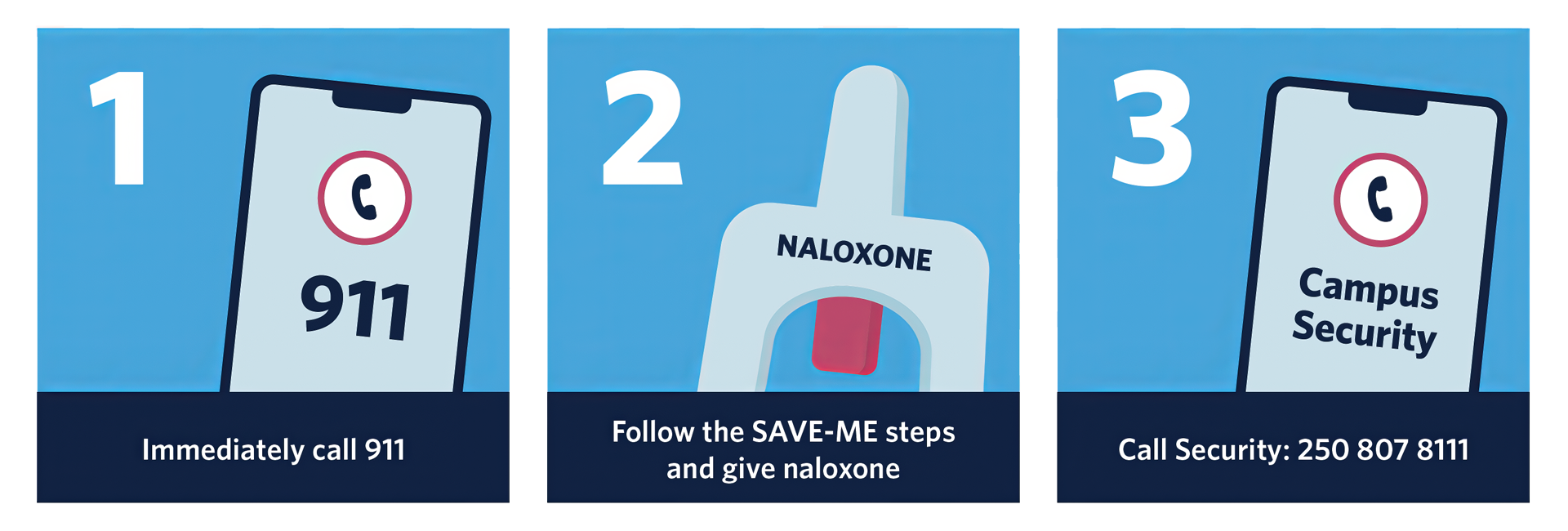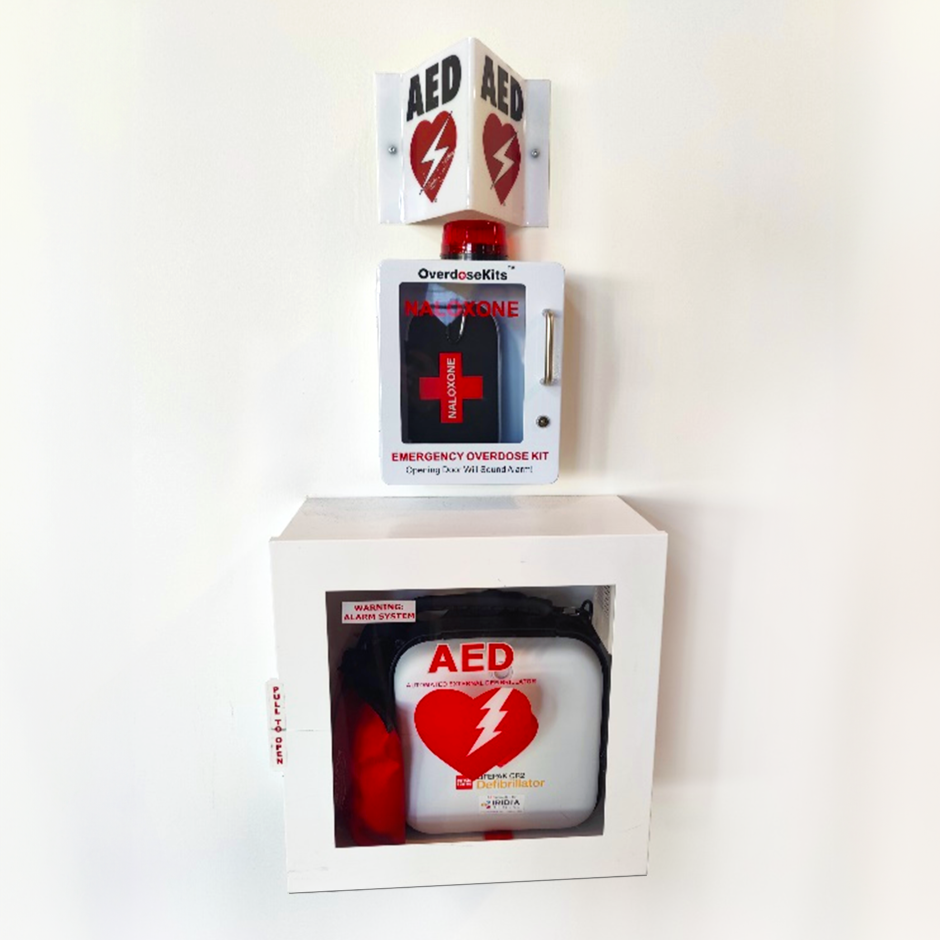Overdose Response and Naloxone Kits
Substance use health and harm reduction for students: Explore information on campus programming, drug checking (testing), overdose response, resources and more.
In 2016, the Province of British Columbia declared a public health emergency due to a significant increase in drug-related overdoses and deaths, primarily driven by a toxic and unregulated supply of illicit drugs. Since then, more than 15,000 lives have been lost in B.C. to toxic drugs, with fentanyl—a potent synthetic opioid—found in the majority of these cases.
Recognizing the critical need for action, the Ministry of Post-Secondary Education and Future Skills convened a Post-Secondary Overdose Prevention and Response Steering Committee in May 2024. This committee identified three key objectives for the program including awareness, response and access to naloxone, a life-saving medication used to reverse opioid overdoses.
In alignment with these objectives, the UBC Overdose Prevention and Response Program is designed to guide the prevention of opioid overdoses by making naloxone readily available and easy to use across the Vancouver and Okanagan campuses. The program also aims to increase awareness of overdose risks, promote effective response procedures, and provide information on available support services.
Through this initiative, UBC reaffirms its commitment to the health and safety of its community, ensuring that comprehensive and proactive safety measures are in place to address the ongoing opioid crisis.
If you suspect an overdose, call 911 right away.
Naloxone is a drug that can reverse an opioid overdose, and naloxone kits are located across UBC. If you think someone is overdosing and unresponsive, it is critical to act quickly. Please follow these steps:

Look for signs of an overdose
- Not moving / being unresponsive
- Slow breathing or no breathing
- Choking or snoring sounds
- Tiny pupils
- Blue or grey lips and fingernails
- Cold and clammy skin
Take action
Contact emergency services immediately. You will not get in trouble with UBC, Student Housing, the police, or Citizenship and Immigration Canada for calling 911.
You are protected by the Good Samaritan Drug Overdose Act, which can protect you from possession charges if you have controlled substances on you, and the Good Samaritan Act, which protects you from liability when providing aid during a medical emergency from liability.
Stimulate: Try to wake the person. If unresponsive, call 911.
Airway: Check if they are breathing normally and check for a pulse (heartbeat). Tilt their head back gently and open their mouth.
Ventilate: Pinch their nose closed, give one breath every five seconds. You can use a breathing mask if you have one.
Evaluate: Are they breathing normally (i.e., one breath every five seconds)? If not, get ready to use naloxone.
Medicate: Your kit may include a nasal spray or an injectable liquid—follow the steps in the kit to administer it. Don’t worry, naloxone cannot hurt someone who is not overdosing.
Evaluate Again: If they are still not breathing normally (one breath every five seconds), give another dose. Put the person on their side and stay with them until emergency services arrive. Note that naloxone wears off between 30 and 120 minutes, and the overdose can return.
Learn more about the SAVE-ME steps and naloxone at respondtooverdose.gov.bc.ca.
Let Campus Security know you are with someone who you suspect of overdosing, and your location on campus. Tell them what steps you have taken so far to respond to the overdose.
Campus Security will stay on the phone with you and continue to advise you while a team member comes to help.
Please stay with the person until Campus Security arrives.
Where are naloxone kits on the campus?
Naloxone kits, each containing two doses of nasal naloxone, are available in building foyers at all publicly accessible buildings and in residences across the UBC Vancouver and Okanagan campuses.
The kits are located in a white cabinet with Naloxone on the front. Most kits can be found next to an AED.
Campus Security patrol officers are first aid trained, carry naloxone kits, and are trained on administering naloxone.
What’s inside a naloxone kit on campus?
Naloxone kits at UBC contain:
- A CPR face shield
- Non-latex gloves
- ’SAVE-ME’ instructions
- Naloxone nasal spray

Get a personal naloxone kit and training on campus
Personal naloxone kits are available at Picnic (UNC 112B) and the Residence Wellness Hub (NCH 251). You can pick up free intramuscular (injectable) naloxone kit to carry with you, as well as get training on how to administer it. Learn more about substance use health and harm reduction.